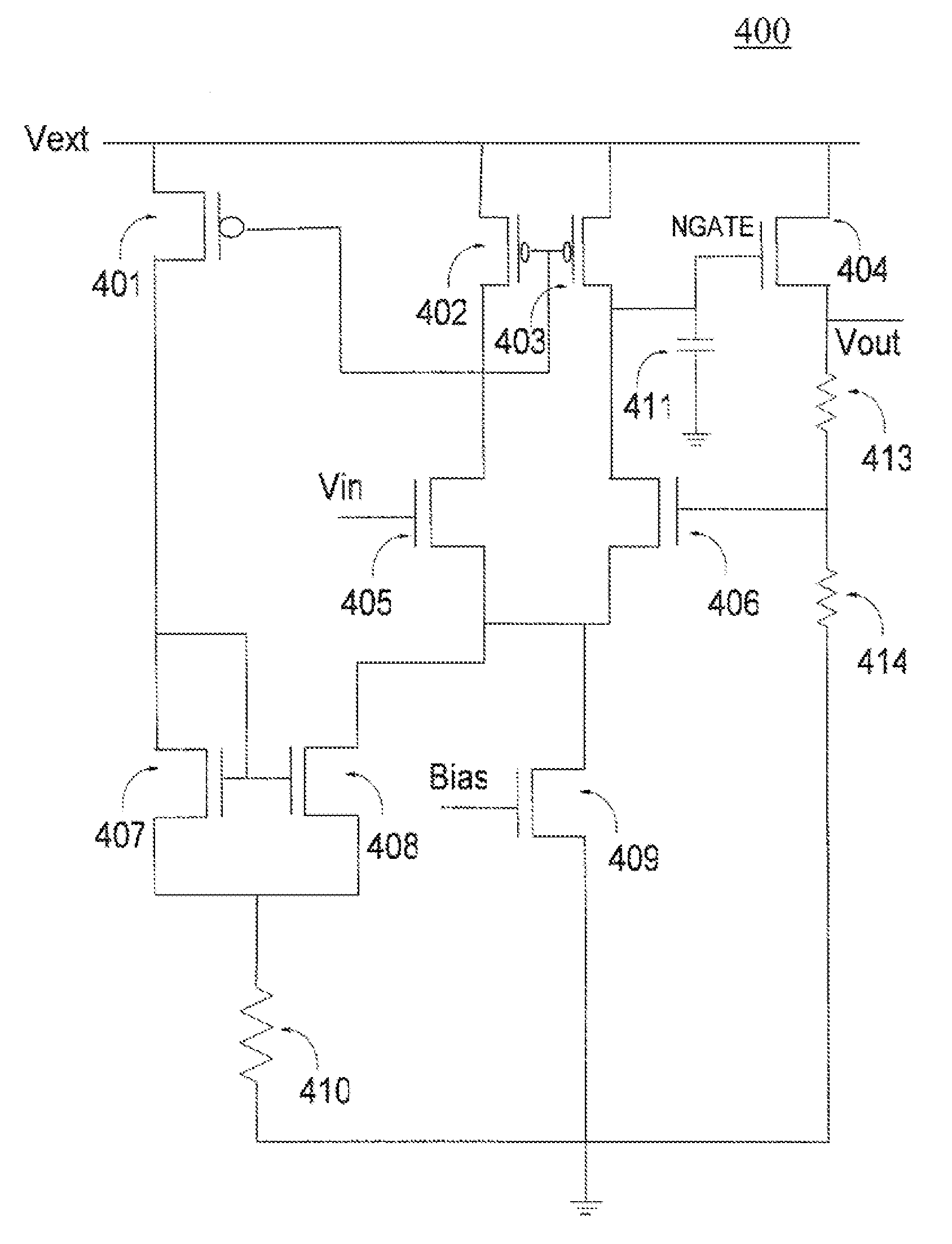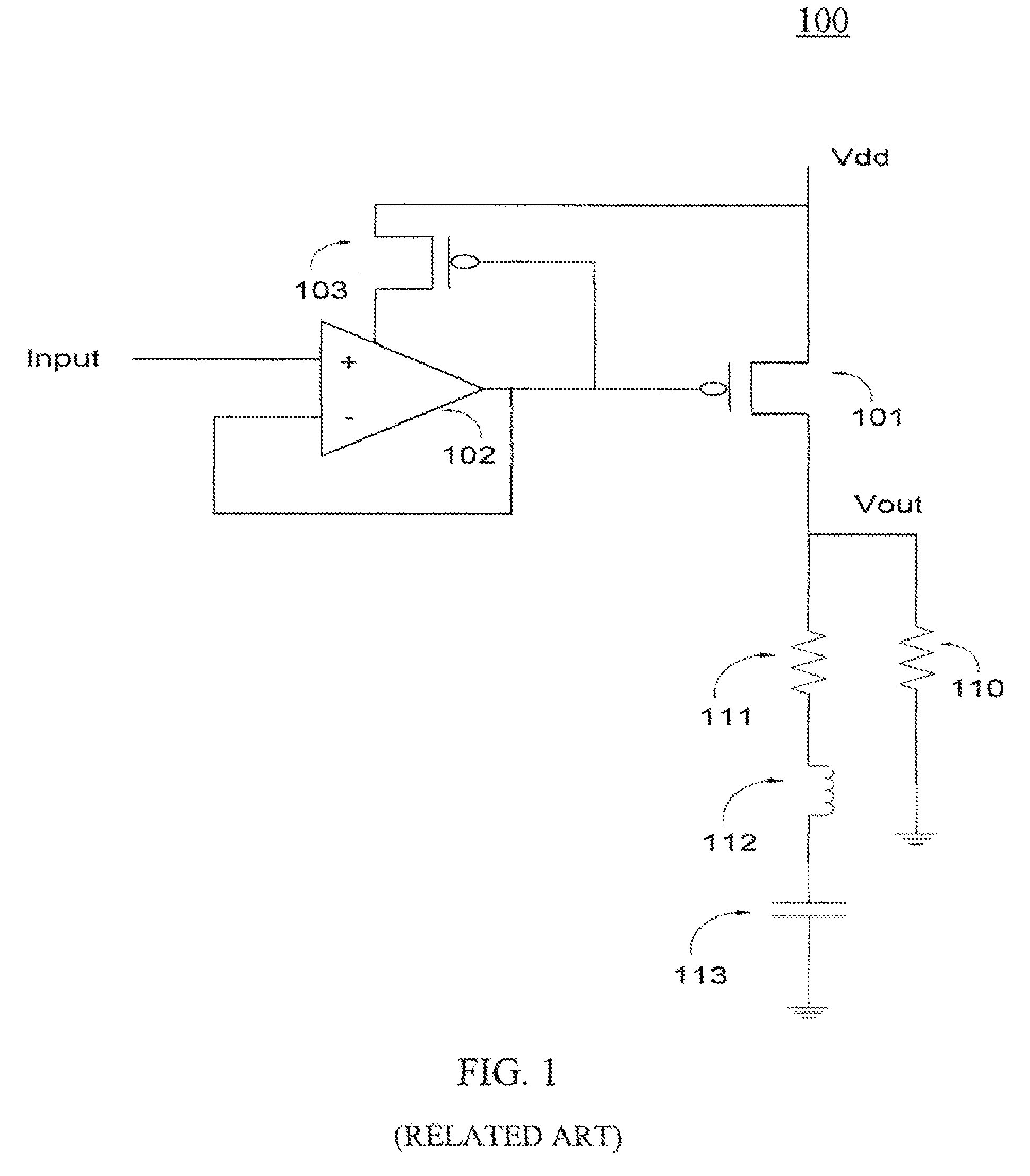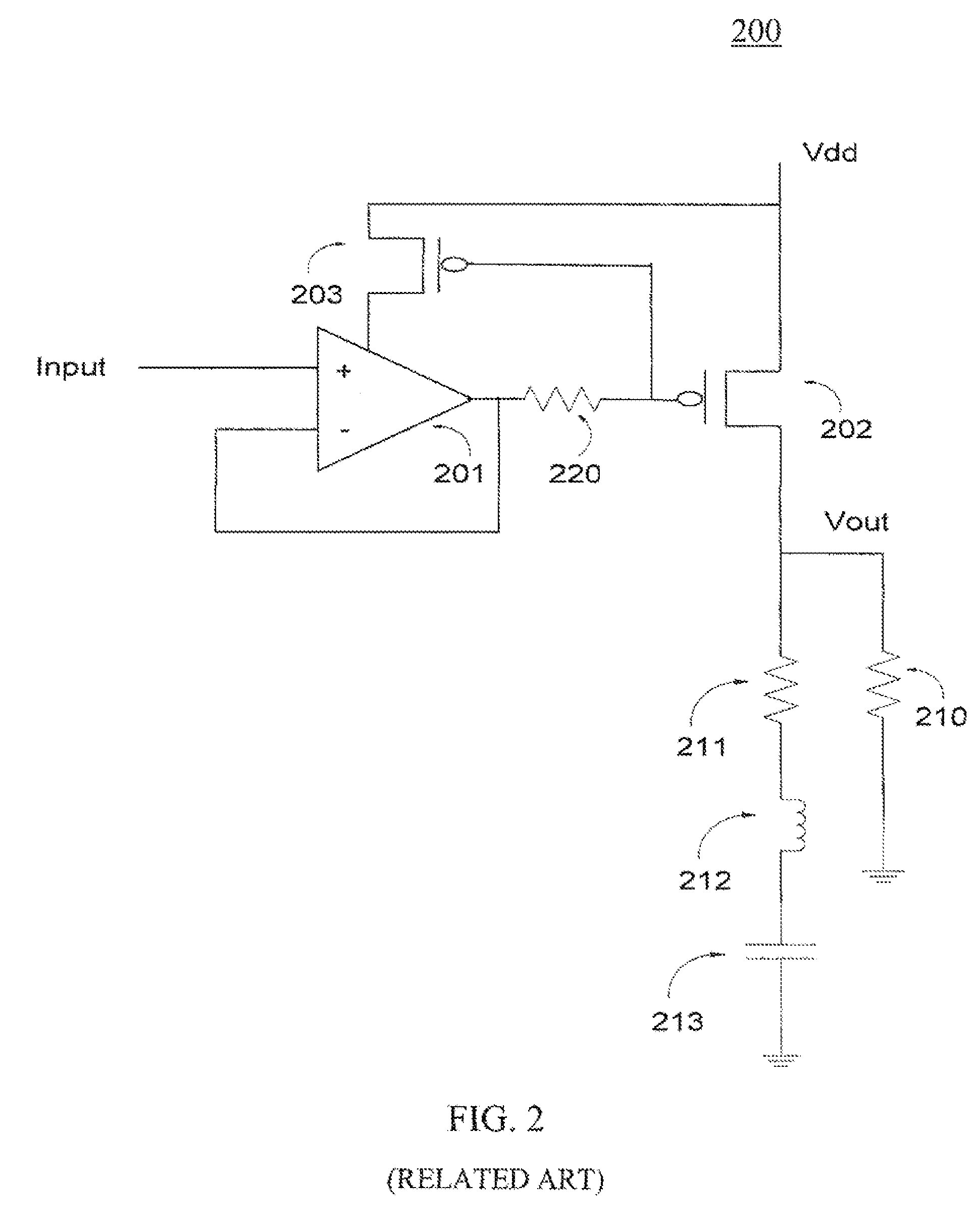Circuit and method for reducing overshoots in adaptively biased voltage regulators
a voltage regulator and adaptive bias technology, applied in the field of voltage regulator circuits, can solve the problems of large area demand for large currents, poor transient response of conventional linear regulators, and unsuitable circuit schemes for their desired applications, and achieve the effect of reducing overshoots
- Summary
- Abstract
- Description
- Claims
- Application Information
AI Technical Summary
Benefits of technology
Problems solved by technology
Method used
Image
Examples
Embodiment Construction
[0027]Exemplary embodiments of the present invention are directed to a circuit and method for reducing overshoots in adaptively biased voltage regulators. Source degeneration of the adaptive bias current mirrors is used as a self-corrective mechanism to limit the current when it builds very high. Thus, the overshoots at the output of the adaptively biased voltage regulator are minimized and the start up time specification of the voltage regulator is maintained. In accordance with an exemplary embodiment of the present invention, the voltage regulator circuit includes an adaptive bias current mirror circuit comprising a first transistor and a second transistor. The first transistor and the second transistor include source nodes coupled to a drain node of the first transistor. A common node is coupled to the source node of the first transistor and the source node of the second transistor. A source degenerate resistor is coupled to the adaptive bias current mirror circuit and is couple...
PUM
 Login to View More
Login to View More Abstract
Description
Claims
Application Information
 Login to View More
Login to View More - R&D
- Intellectual Property
- Life Sciences
- Materials
- Tech Scout
- Unparalleled Data Quality
- Higher Quality Content
- 60% Fewer Hallucinations
Browse by: Latest US Patents, China's latest patents, Technical Efficacy Thesaurus, Application Domain, Technology Topic, Popular Technical Reports.
© 2025 PatSnap. All rights reserved.Legal|Privacy policy|Modern Slavery Act Transparency Statement|Sitemap|About US| Contact US: help@patsnap.com



